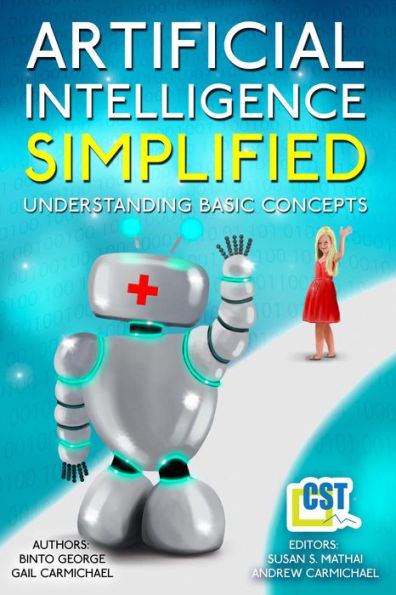A small book that introduces key Artificial Intelligence (AI) concepts in an easy-to-read format with examples and illustrations. A complex, long, overly mathematical textbook does not always serve the purpose of conveying the basic AI concepts to most people. Someone with basic knowledge in Computer Science can have a quick overview of AI (heuristic searches, genetic algorithms, expert systems, game trees, fuzzy expert systems, natural language processing, super intelligence, etc.) with everyday examples. If you are taking a basic AI course and find the traditional AI textbooks intimidating, you may choose this as a "bridge" book, or as an introductory textbook. (This is old edition -- a new revised edition is currently available.)
A small book that introduces key Artificial Intelligence (AI) concepts in an easy-to-read format with examples and illustrations. A complex, long, overly mathematical textbook does not always serve the purpose of conveying the basic AI concepts to most people. Someone with basic knowledge in Computer Science can have a quick overview of AI (heuristic searches, genetic algorithms, expert systems, game trees, fuzzy expert systems, natural language processing, super intelligence, etc.) with everyday examples. If you are taking a basic AI course and find the traditional AI textbooks intimidating, you may choose this as a "bridge" book, or as an introductory textbook. (This is old edition -- a new revised edition is currently available.)

Artificial Intelligence Simplified: Understanding Basic Concepts
138
Artificial Intelligence Simplified: Understanding Basic Concepts
138
Product Details
| ISBN-13: | 9781944708023 |
|---|---|
| Publisher: | CSTrends LLP |
| Publication date: | 01/11/2016 |
| Sold by: | Barnes & Noble |
| Format: | eBook |
| Pages: | 138 |
| File size: | 6 MB |
